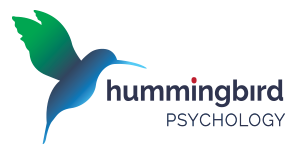Now that you have set the stage to peak your child’s curiosity in reading by being a good role model and providing a language and literacy rich environment, let’s take a look at how to continue that momentum. You might assume that children learn to read simply by exploring books and engaging in conversations about what they’ve read. These are important to literacy development, but there is more to it. Children must be taught to read. Sounds simple enough, but what constitutes good reading instruction? What do young children have to know in order to become skilled readers? What can you do at home to support them? Here, I will present evidence-based strategies for teaching your child to read.

5 Strategies That Lead to Reading Success in Young Children
Reading Strategy #1: Teach the Alphabet
We all remember learning our ABCs and the alphabet song. Decades of research has proven that knowing the names of the letters and the sounds that letters make is critically important to future reading success. Print knowledge typically begins at around age 4 when children begin kindergarten. What can you do to help build your child’s knowledge of letters and their sounds? Use home-made flash cards – write a letter on a card, throw the cards into a paper bag, let your child pull out a card, then ask your child to name the sound that goes with the letter. Read alphabet books together that match pictures with letters. Make a letter sound and have your child write the letter in sand or flour.
Reading Strategy #2: Develop their Phonological Awareness
Phonological awareness refers to the ability to discern sounds within words and to manipulate them. This skill does not involve recognizing letters or words. It is purely auditory, but it is highly predictive of later decoding and spelling skills. Rhyming, segmenting words into syllables and individual sounds (phonemes) and blending those sounds together are all examples of phonological awareness. There are many ways that you can practice developing phonological awareness at home. Play rhyming games and read aloud nursery rhymes to help children recognize the patterns in words. Play “I spy” but try to find words that begin with a certain sound. Create your own game that involves identifying the first sound in a spoken word, the last sound, and the middle sound.
Reading Strategy #3: Practice recognizing Sight Words
In kindergarten, children are taught high-frequency sight words which are words that occur frequently in text. Some of these words are phonetically regular, meaning that children can take a sounding-out approach to reading them. Some sight words do not follow a regular spelling pattern (e.g., “said”, “the”). They have to be memorized and practiced often. To make learning these words more fun, try using magnetic letters on your fridge, a white board, or in a baking tray to spell words and eventually even make crossword puzzles. You could also try incorporating sight words into a literacy version of the game Concentration. Print out a list of 10 sight words for your child’s grade level (you can get this from the classroom teacher or the internet), make a copy of the page and cut out each individual word (you’ll have 20 cards altogether). Place the cards face down on a table randomly. Take turns with your child turning over a card and trying to find a matching card from memory. Ensure you say the words aloud as you turn them over.
Reading Strategy #4: Promote Fluency
In order to learn to read text smoothly and efficiently, children need to have lots of opportunities to read single words and blend them together into sentences that make sense. The more practice they have, the more automatic reading will become. Typically, by senior kindergarten or early grade one, children move beyond reading words in isolation and are introduced to patterned books that feature short sentences with a repetitive structure and rhymes. As their reading skills advance, teach children to pay attention to punctuation and phrasing – a period at the end of a sentence will sound very different than a question mark. Model fluent reading by reading a sentence or short paragraph, and then ask your child to have a turn. If using technology, ask your child to follow along with the text of an e-book.
Reading Strategy #5: Develop their Vocabulary and Comprehension
Oral language skills are closely linked to reading comprehension. In order to derive meaning from a sentence or phrase, one must be able to read the individual words and also to understand the meaning of those words. Understanding of sentence structures and inferences are also important to understand text. You can develop your child’s oral language abilities by having lots of rich and varied conversations at home, asking your child open-ended questions about a recent event or a movie that you’ve watched together (e.g, “what did you think about…?”, “why do you think the character said that?”), encouraging your child to learn the meaning of words that they do not know while reading or while listening, and to use synonyms for words that they may use frequently (e.g, “can you think of another word for happy?”).
Skilled readers eventually learn to integrate all of these strategies and use them automatically. Initially though, in the early primary grades, these skills are best learned through lessons that are taught explicitly and systematically in a step-by-step progressive fashion, gradually moving to more complex skills as the easier ones are mastered. Studies consistently show that this structured form of instruction is effective in teaching and improving literacy skills. If your child is struggling with reading despite your best efforts, you may wish to discuss your concerns with your child’s teachers so that evidence-based reading interventions can be put in place.
About Dr. Anita Burhanpurkar
Registered with the College of Psychologists of Ontario (CPO) since 2003, Dr. Anita Burhanpurkar is licensed by the College of Psychologists of Ontario to work with children, adolescents and families. She currently works for the Dufferin-Peel Catholic District School Board in Mississauga and also provides psychological services to children and adolescents through her private practice, Hummingbird Psychology.
